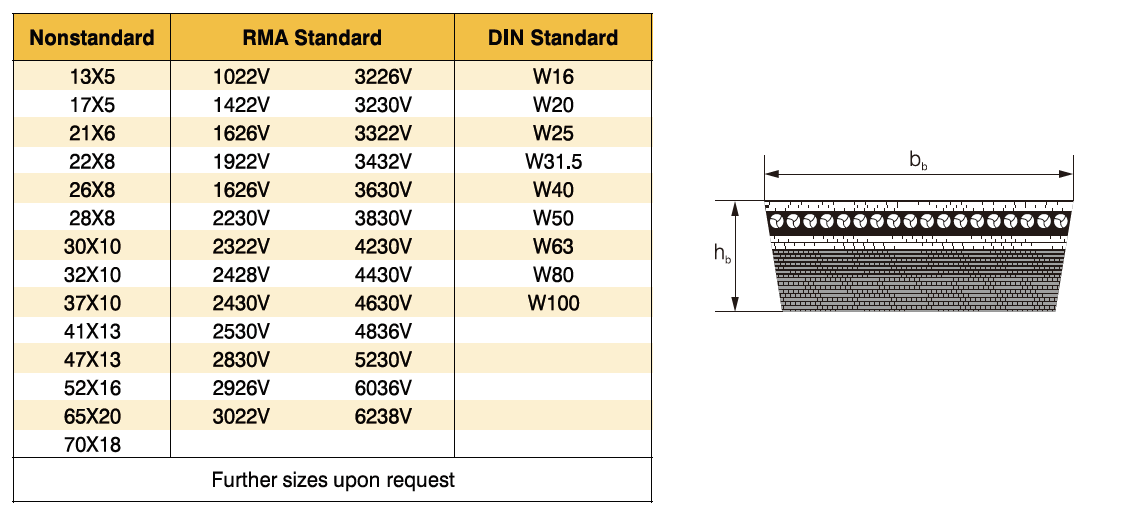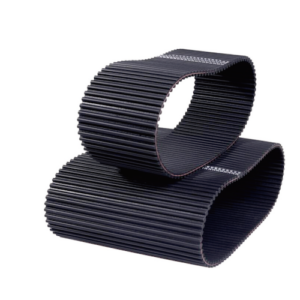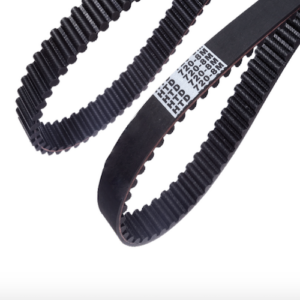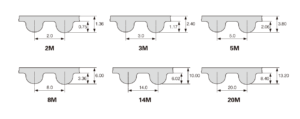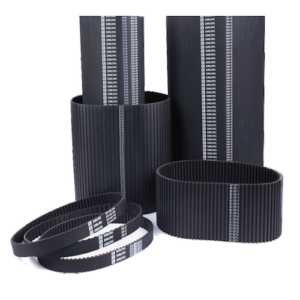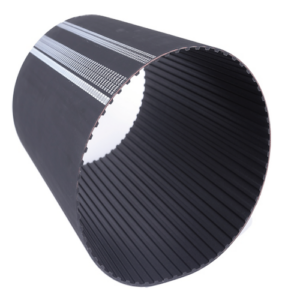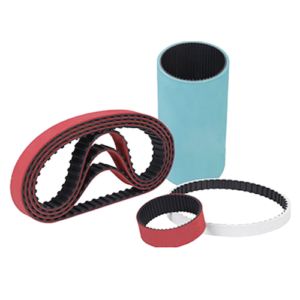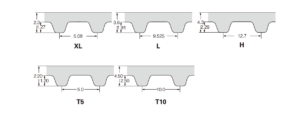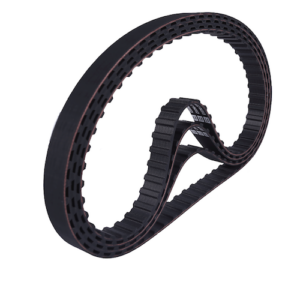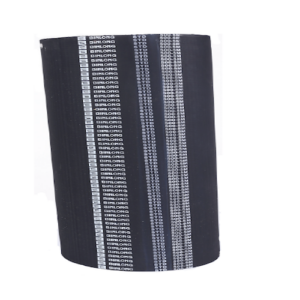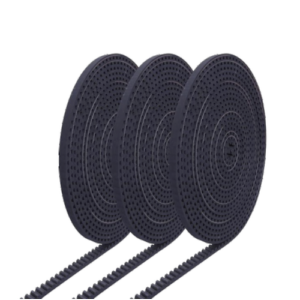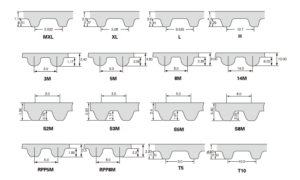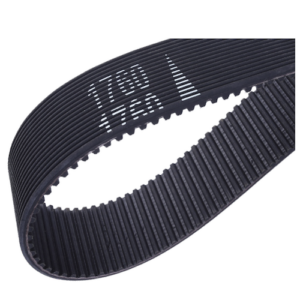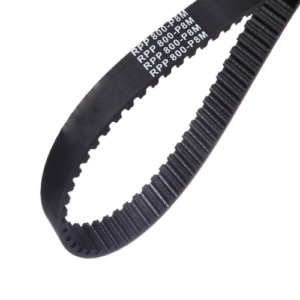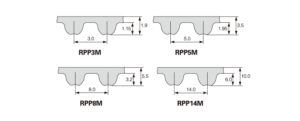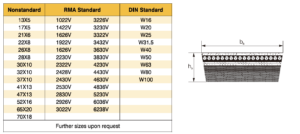Timing Belts
Showing all 10 results
-
Belts
Double Sided Timing Belts
Request Quote This product has multiple variants. The options may be chosen on the product pageDouble-sided timing belts, also known as dual-sided synchronous belts, feature teeth on both sides of the belt. This design allows the belt to transmit power from both sides, making them ideal for reverse-motion applications, serpentine belt drives, and multi-axis power transmission systems. The structure of double-sided timing belts contain teeth on both sides which enables power transmission in both directions. They contain high-tensile strength cords which are reinforced with fiberglass, aramid (Kevlar), or steel for low stretch and high torque capacity. They have a rubber or polyurethane construction which provides resistance to oil, chemicals, and temperature variations. They are available in trapezoidal, HTD, and STD Profiles depending on torque and efficiency needs.
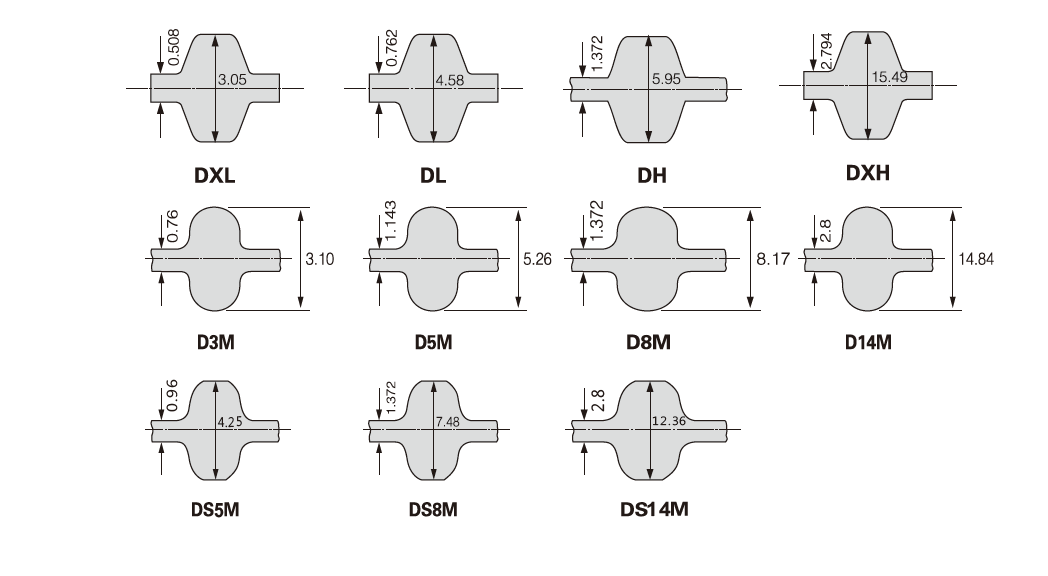
-
Belts
HTD Type Timing Belts
Read moreHTD belts have a larger, more robust tooth profile for increased capacity, as compared to trapezoidal timing belts. They are suitable for many applications including data storage, hand power tools, postage handling, food processors, office machines, centrifuges, money handling, medical diagnostic, sewing machines, ticket dispensers, robotics, vending machines, and vacuum cleaners.
-
Belts
Imperial Timing Belts
Request Quote This product has multiple variants. The options may be chosen on the product pageImperial timing belts, also known as inch-based timing belts, use a toothed profile for precise motion transfer without slippage. These belts follow the imperial (inch-based) pitch system rather than the metric system, and they are widely used in older machines, automotive applications, and industrial equipment.

-
Belts
Linatex/Top Coating Timing belts
Read moreCoating Timing Belt opens up new segment of market in packaging industry and lighter material carrying application where power transmission is to be done with the help of timing
- Belt with soft profile top rubber is used for conveying lighter & fragile materials where no scratches are desirable like in shampoo sachet making, wafer manufacturing industry and bottling plants.
- Belt with regular profile top rubber is used in wire drawing &cable industries for giving support in take-up caterpillar &other similar operations in manufacturing industries.
- Operating Temperature Range: -18°Cto +80°C
- Product Range: Available in all Timing belt sections
-
Belts
Metric Timing belts
Request Quote This product has multiple variants. The options may be chosen on the product pageMetric timing belts are synchronous belts that use a toothed profile to ensure precise motion transfer without slippage. Unlike V-belts, which rely on friction, timing belts engage directly with pulleys via teeth, providing exact positioning and efficient power transmission. They provide precise, reliable, and efficient power transmission for automation, robotics, CNC, automotive, and medical equipment.

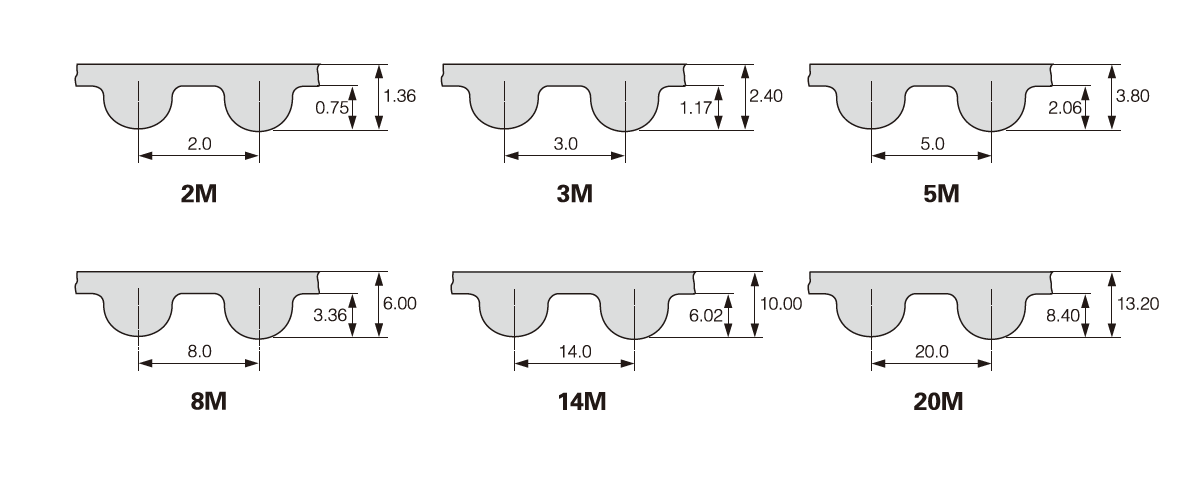
-
Belts
Open-End Timing Belts
Read moreRubber Open-End Belting is well suited for use in positioning applications, which is a cost effective, low maintenance drive alternative.
MARKETS/APPLICATIONS:
Well suited for linear movement, positioning and conveying applications.
-
Belts
Roller Mill Belts
Read more- Special rubber compound for high frictional grip
- Ribbed driving surface for maximum area of contact and reduced surface pressure
- Fiberglass cord for high tensile strength, excellent flex life and high resistance to elongation
- Polychloroprene rubber teeth for perfect bonding, protecting the cords from oil, grease, and moisture
- Sprocket side of the timing belt has special woven nylon fabric which is chemically treated to reduce friction it is resistant to heat and abrasion, protecting the teeth from getting damaged
-
Belts
RPP Type Timing belts
Read moreRPP belts have a larger, more robust tooth profile for increased capacity, as compared to trapezoidal timing belts. They are suitable for many applications including data storage, hand power tools, postage handling, food processors, office machines, centrifuges, money handling, medical diagnostic, sewing machines, ticket dispensers, robotics, vending machines and vacuum cleaners.
-
Belts
Synchronous Belts
Read moreSynchronous belts, commonly referred to as timing belts, are designed to provide precise power transmission with zero slippage. These belts use toothed profiles that engage directly with matching toothed pulleys, ensuring synchronized motion between rotating shafts.
Unlike classical V-belts, which rely on friction, synchronous belts allow for exact timing of components, making them essential in automation, robotics, CNC machines, and automotive engines.
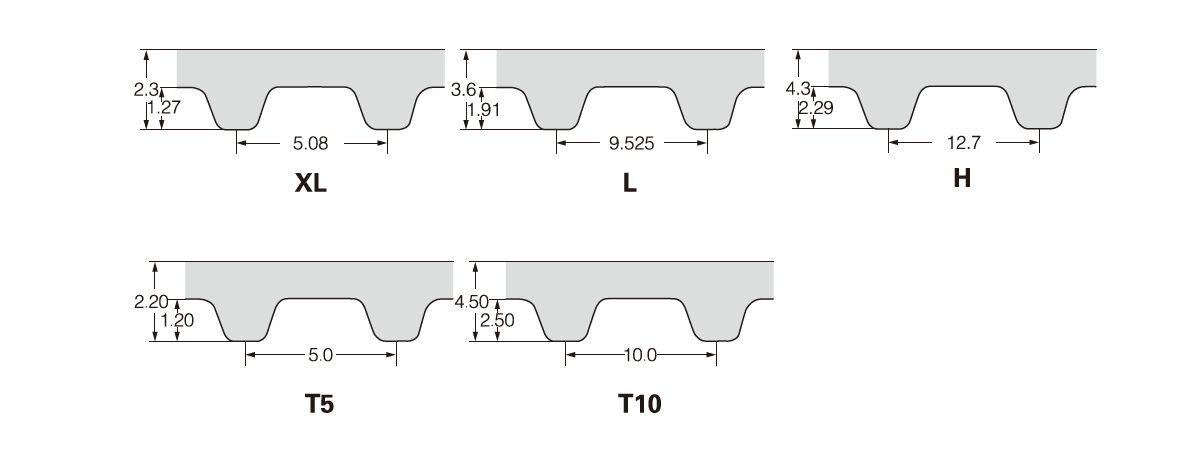
-
Belts
Variable Speed Belts
Request QuoteVariable speed belts or Adjustable Speed Belts are a specialized type of power transmission belt designed for variable-speed drives, where the speed of the driven shaft changes depending on the position of an adjustable pulley. These belts are commonly used in machines requiring controlled speed variations, such as industrial machinery, agricultural equipment, and automotive applications. They contain a wider cross-section which provides greater surface area for improved power transmission. They are flexible and strong with reinforced with aramid (Kevlar), polyester, or fiberglass cords to handle high dynamic loads and speed changes. They are resistant to wear and heat since they are made from specialized rubber compounds (e.g., neoprene, EPDM, or polyurethane) for increased oil, heat, and abrasion resistance. They are designed for variable pulley systems what work in expanding and contracting pulleys, allowing for continuous speed adjustments.
